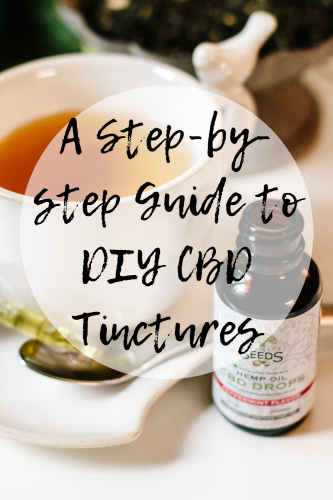
Cannabis oils, like CBD oil and hemp oil, are popular products for cannabis newbies because they are easy to buy and administer. You can drop CBD oil under your tongue, mix it into food and drink and even vape it if you are so inclined.
However, there are downsides to CBD oil. For one, high-quality cannabis oils can be expensive. The extraction and purification process requires complex, dangerous and expensive equipment, and to get higher doses of the compound within the oil, manufacturers might need to use excessive amounts of raw cannabis. What’s more, CBD oil doesn’t last terribly long on the shelf, and CBD oil past its prime can be less effective (at best) or toxic (at worst).
If you are ready to move beyond the introductory level of CBD oil, you might be interested to learn that you can make a similar product, called a tincture, at home. Tinctures are alcohol-based as opposed to oil-based, which means they last much longer, and it is easier to add in flavorings that make the mixture more palatable. Even better, tinctures utilize inexpensive ingredients, so you might be able to cut your cannabis costs while enjoying a more customized product.
Making tinctures is easy and fun. Here’s a step-by-step guide to get you started.
Step 1: Decarb Your Flower
Truthfully, step one is sourcing hemp flour or trimmings as opposed to bud or trim from marijuana plants. Technically — and legally — hemp is cannabis that has a THC content lower than .3 percent, which usually means it has a higher CBD content. You should check your local dispensary for raw hemp, but if you don’t have any luck, you might also try industrial hemp farms in your area, or you can grow your own. If you decide to grow your own, exploring reputable sources, such as Multiverse Beans or other trusted seed banks, can help ensure you’re getting high-quality hemp for your needs.
Your body can’t absorb CBD in its raw acid form; the compound needs to be heated to a certain temperature for it to undergo a shift into CBD. This process is called decarboxylation, or “decarbing” by those in the community. Essentially, you grind up your hemp into small chunks or powder, and you spread the hemp evenly over a baking sheet lined with parchment paper. Bake the material at 240 degrees Fahrenheit for 40 to 60 minutes, until the material turns slightly golden brown and emits a weedy aroma. Let the material cool completely before handling.
Step 2: Choose Your Alcohol
Tinctures are alcohol-based, but the type of alcohol you choose is up to you — as long as you choose one that is safe to drink. Most herbalists and tincture-making professionals prefer a high-quality, low-flavor, clear liquor like grain alcohol or vodka. This allows the natural terpenes of the hemp shine through. However, the truth is that you can use any spirit, as long as it is between 80 and 190 proof. If you have a brandy, bourbon or rum that you love the flavor of, you can use that — but you should know that the hemp will change the flavor of the final product.
Once your hemp is cool, you should place it in a glass jar in which it will take up about 2/3 of the volume. Then, you should pour your alcohol of choice to fill the rest of the jar. Screw the lid on, give the mixture a shake to hydrate all of your hemp.
Step 3: Add in Extras
If you want, you can add other herbs and elements into your CBD tincture. Herbalists often like to add elements that compound CBD’s properties of relaxation and pain relief. You can also add berries to alter the flavor or other natural or artificial flavorings, including terpenes. These are a popular additive as not only do they alter the flavor, they also help the CBD to work more effectively. You can find terpenes for sale online if you’d like to try this. This is something that you might experiment with as you gain more confidence making tinctures. Once you add your extras, you should give your mixture another shake.
Step 4: Infuse
It takes time for the alcohol to leech the important compounds from plant material. You should allow your tincture to sit in a cool, dark place for a month, shaking the mixture again about once per week to ensure all the plant materials are submerged in the alcohol.
Step 5: Store and Enjoy
Once the month has passed, you should pour the infusion through a cheesecloth-lined mesh strainer to separate the plant material from the tincture. It is best to store your tincture in a one-ounce jar with a dropper lid, so you have easy access to your CBD. Then, you can add a couple drops to your morning juice, your afternoon tea or anything else you eat or drink in a day.
Tinctures are easy, inexpensive and totally customizable. The sooner you start making your own tinctures at home, the sooner you can stop wasting your money on overpriced CBD oils.





Leave a Reply